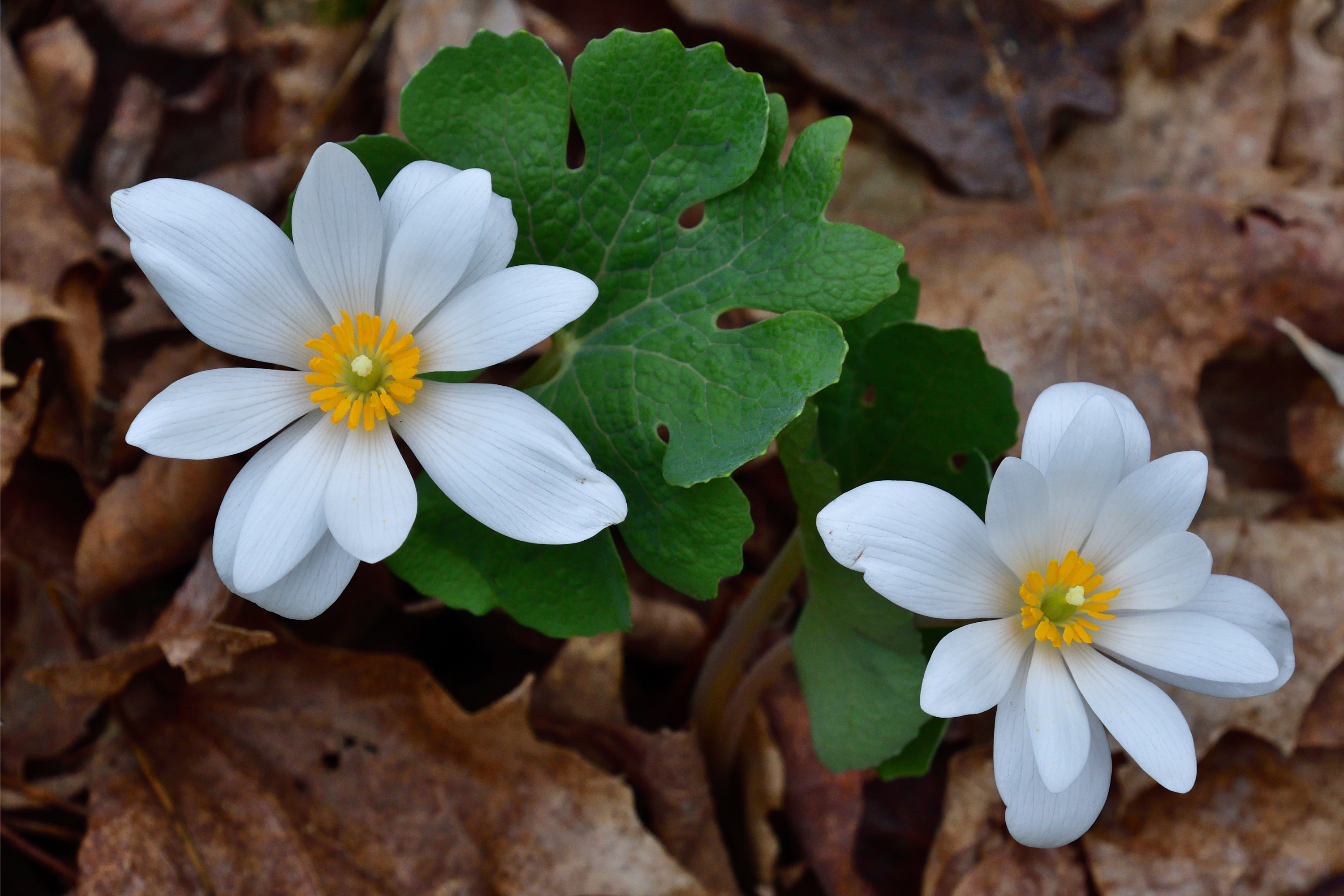Bloodroot
(Sanguinaria canadensis)

Description
Sanguinaria canadensis, commonly known as bloodroot, is a perennial plant that is native to the eastern part of North America. The plant is highly valued for its medicinal properties and has been used for centuries by Native American tribes to treat a variety of ailments. The name "bloodroot" comes from the red juice that oozes from the plant's root when it is cut or broken. In this article, we will explore the various aspects of Sanguinaria canadensis, including its physical characteristics, habitat, cultivation, medicinal uses, and potential side effects. Physical Characteristics Sanguinaria canadensis is a small plant that typically grows to a height of 6 to 12 inches. The leaves of the plant are basal, meaning that they emerge from the ground and are not attached to a stem. The leaves are large, lobed, and deeply veined, and are usually about 3 to 6 inches wide. The flowers of Sanguinaria canadensis are also quite distinctive, with 8 to 12 white petals surrounding a yellow center. The flowers are generally 1 to 2 inches in diameter and appear in early spring. Habitat Sanguinaria canadensis is found primarily in the eastern part of North America, from Nova Scotia and Quebec in the north to Florida and Texas in the south. The plant prefers moist, well-drained soils and is often found in wooded areas, along streams, and in other areas with partial shade. Sanguinaria canadensis is also commonly cultivated as an ornamental plant in gardens and parks. Cultivation Sanguinaria canadensis is relatively easy to grow and is a popular choice for gardeners looking to add some early spring color to their gardens. The plant prefers well-drained soils that are rich in organic matter, and it is important to keep the soil moist but not waterlogged. Sanguinaria canadensis is best planted in partial shade, as it can be damaged by intense sunlight. The plant is propagated by division or by planting the small bulbs that form at the base of the parent plant. Medicinal Uses Sanguinaria canadensis has a long history of medicinal use, and its medicinal properties have been recognized by Native American tribes for centuries. The plant contains a number of active compounds, including alkaloids such as sanguinarine and chelerythrine. These compounds have been shown to have a number of therapeutic properties, including anti-inflammatory, analgesic, and antimicrobial effects. One of the most common traditional uses of Sanguinaria canadensis is as a treatment for skin conditions such as warts, eczema, and ringworm. The plant's antimicrobial properties make it effective against a wide range of microorganisms, including bacteria and fungi. Sanguinaria canadensis is also used as a treatment for respiratory conditions such as bronchitis and asthma, as well as for digestive complaints such as diarrhea and dysentery. Potential Side Effects While Sanguinaria canadensis is generally considered safe when used as directed, there are some potential side effects that should be considered. The plant contains a number of alkaloids that can be toxic in large doses, and excessive use can cause nausea, vomiting, and other gastrointestinal symptoms. In rare cases, high doses of Sanguinaria canadensis can cause respiratory failure, seizures, and even death. It is important to note that Sanguinaria canadensis should not be used during pregnancy or breastfeeding, as its safety in these situations has not been established. Additionally, the plant should not be used in children without the guidance of a healthcare professional.
Taxonomic tree:







